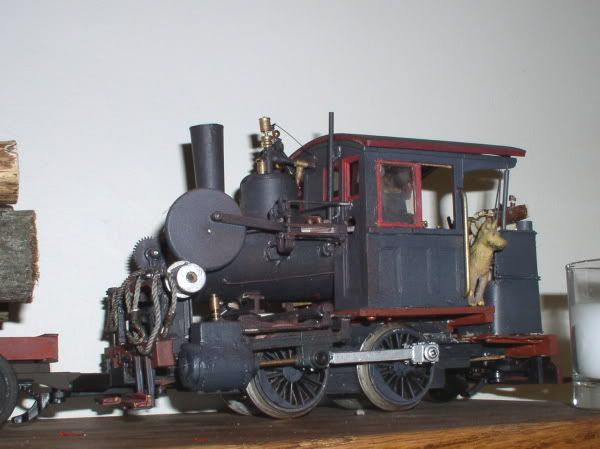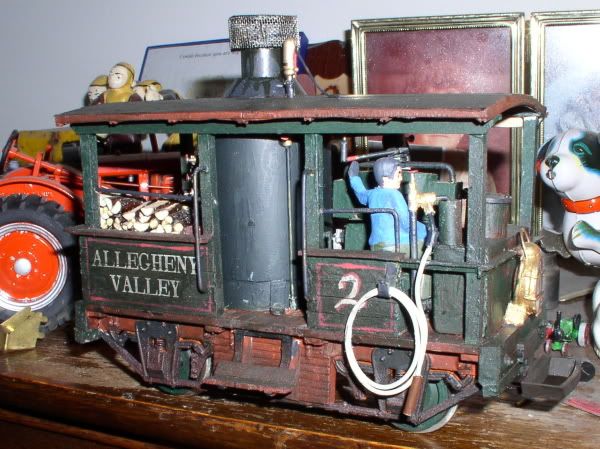I searched the forums, I know someone has to have already done this. though it seems most people switch out wood for coal in thier tenders. ![]() If anyone has modeled a wood loaded tender I would be interested in pictures and a few how too’s. TY in advance. f/SP
If anyone has modeled a wood loaded tender I would be interested in pictures and a few how too’s. TY in advance. f/SP
I don’t have a good photo that shows the load, but building a proper wood load is pretty simple. Go out and find a bush or tree branch that’s around a 1/2" to 3/4" in diameter, preferably fairly straight and free from a bunch smaller branches. Cut the branch into short lengths, somewhere around 1" to maybe 1 1/4" long. Then get a sharp chisel and hammer and split each piece into quarters or sixths, whichever works for you. My suggestion would be to do this while watching TV or something, just to have something to keep your mind busy while doing such a repetitive task. You’re going to need a fair number of logs, so when in doubt, cut some more.
Once you’ve got them cut, you can glue them in the tender. I usually just use white glue and stack them fairly neatly as you would a wood pile by your fireplace. Depending on your tender, you may have to use some styrene, cardboard, or something to create a base onto which to glue the wood.
Later,
K
Not tenders, but bunkers… As Kevin says, ‘tedious’ is a rather good word… I split mine with a heavy bladed hobby knife and cutting board. Real small stuff can be just split in half.
Clearance priced decorative branches from the craft store will work if you’re a city fella.


My first loco, when I started out four years ago, was a Bachmann ‘Annie’. It is a lovely looking loco -the ‘blue’ Russian iron boilered D&RGW version. It is a wood burner. What spoils this model is the ‘plastic’ log moulding in the tender. I decided to replace this plastic ‘load’. In 2008 I pruned the neighbors flowering cherry tree. Cherry is a nice hard wood, easy cut into logs for flat cars and into small pieces suitable for tenders or bunkers. The larger logs were put to use straight away as loads on three flat cars but the smaller tender sized logs, which had been cut and quartered to size were left for around nine months to dry out. Once they were naturally ‘dried’ out I proceeded to build a new log load for the ‘Annie’ tender. A flat thin ply base was used for a base (which sits squarely where the plastic load did) and the new real wood logs glued, using wood glue which dries transparent, in a similar style to the ‘plastic’ load. The appearance is a great improvement. I am not concerned about the glue dissolving as I never run locos in rain. A very simple project .
Rose wood also works well. When cutting back the branches after the roses finish blooming save the branches. Let the “wood” dry up, then remove the thorns and leaves, cut into appropriate lengths and split. Rose “wood” has a darker brown color than most tree branches, mine were a pale gray, which DA BOSS did not approve. I didn’t do a tender or bunker, but stacks of firewood at the back door of houses.